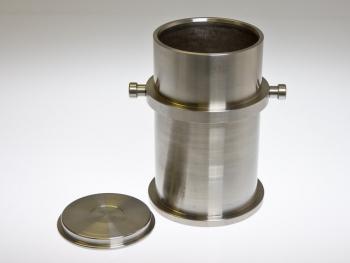“Do I really have to?” your technician asks with a frustrated look on his face when you tell him to be sure to clean the mold and end plate after each specimen. “I hate that job! Does it really make difference?”
Well, how important are clean molds and end plates? Let’s take a look.
Debris and binder buildup on end plate surfaces and on critical mold contact points can alter the angle of gyration applied to a specimen. A low angle of gyrations leads to less compaction and higher air voids. A 0.1° drop in the angle of gyration lowers the bulk specific gravity of an asphalt specimen by 0.010 to 0.015.
A buildup of binder residue on molds and end plates can cause binding between the end plates and the mold during compaction, which may reduce the compaction pressure applied to the asphalt. A low compaction pressure leads to less compaction and higher air voids. A 10 kPa decrease in compaction pressure lowers the bulk specific gravity by 0.002 to 0.004.
How important are consistent, properly compacted specimens? Most would say they are a necessity. So, as you can see, keeping your molds and end plates clean is critical to producing the best asphalt specimens possible.
“So, what is the best way to clean molds and end plates?” you ask.
- The best approach is to make wiping molds and end plates off after each use a standard practice. WD-40 works well as a solvent and leaves a residue coating that inhibits corrosion. Doing this will prevent a buildup of material on your equipment that requires much more effort to remove.
- If you have allowed material to build up on your molds and end plates over time, you may place them in an oven and warm them to no more than 140°F (60°C) before applying a solvent. Never place molds in an ignition oven to burn off the asphalt because the high temperature required to do this may damage the molds by making them go out of round, and out-of-round molds are unrepairable. Complete the process by wiping them clean with WD-40.




